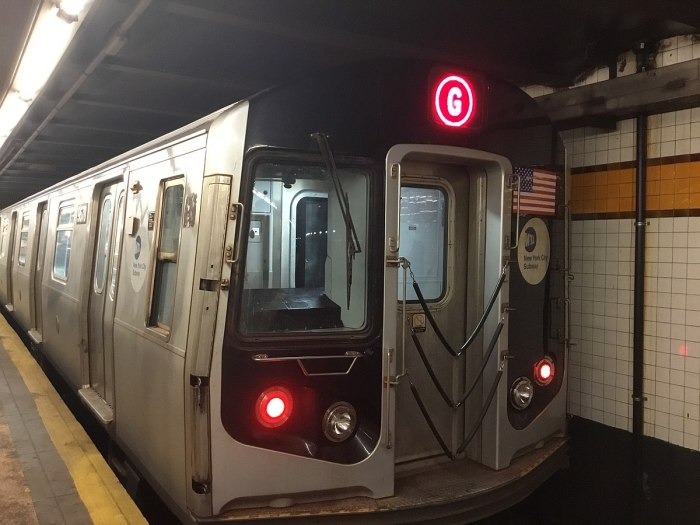The vacancy arose in the collective house in the spring: occupants of a conjoined apartment were leaving, and collective members met to decide what came next.
It’s a cooperative-living house in north Brooklyn: house meetings, intentionality, food justice and dance parties, cargo biking and meditation. What should they do with the extra rooms? Expansion? Artist studios? That might further the onslaught of gentrification. One resident, Rebekah, had a better idea: The apartment could become a sanctuary for immigrants.
In the time after President Donald Trump was elected and put up repeated barriers to immigration, it was the kind of thing left-leaning people in New York might mention in cocktail party brainstorming sessions, or deep in drinks. Most didn’t follow through. But residents of this collective house did.
The house setup, which has existed for around 10 years, had never taken on a project like this. It has a mission of maximizing collective members’ social impact, and minimizing their environmental impact, says Rebekah, a 36-year-old college professor. Hosting would help maximize their social impact.
So one day this summer after coordination with activists and immigration groups, a family arrived: a mother in her 30s, a father in his 20s, and a newborn baby not yet six months old. They had fled Central America’s Northern Triangle region for political reasons, joined a caravan and made the multi-thousand-mile, month-long trek to Tijuana. Finally, they crossed the border and are seeking asylum here.
(amNewYork is withholding the full names of the family and collective residents, and the exact collective location, for legal and safety reasons.)
It could have been a strange fit. The family moved into a private room and one semi-private one on the house’s third floor that also featured the meat kitchen. The main kitchen is the vegetarian one, and the family eats meat.
Once a week, the father must remain in the apartment for hours. He had been detained longer than his pregnant partner at the border and was released with an ankle bracelet, eventually making his way to New York with help from the Miles4Migrants program. Here, he has to be prepared for weekly check-ins from an official with the Intensive Supervision Appearance Program, says Cat, a 29-year-old dramaturg, performer, director and friend of the house who has been helping the family.
The infant, born on U.S. soil, sometimes cried.
But the family was clearly eager to be there, and residents were welcoming. The family joins the now-13-member household at weekly dinners, infant in tow. Rebekah says the parents were thrilled when she sent them a list of free summer concerts in Brooklyn. There was a screening of “Edward Scissorhands”. What a difference from being afraid to go out to a grocery store back home.
One resident gave the father a beloved bike that he could use to move around the city — he couldn’t legally work yet, but Rebekah says he went with her to volunteer for events like food giveaways. On one trip, when they got off their bikes, he did a little “cabbage patch” dance with his arms, that universal language, to show he was happy.
The mother is picking up English even quicker, taking lessons and showing a sharp ear for cultural idioms. Perhaps it is a required orientation to modern America: for a while she was mimicking the “cash me outside” slogan, Rebekah says.
One resident, Emily, a 27-year-old social work student, was away for the family’s arrival but by the time she returned saw how attuned they had become already: “So quickly they were part of the family.”
“I feel comfortable,” says the mother, noting small kindnesses from house members such as the gift of a lamp.
The house has been fundraising to pay for the family’s share of rent, utilities, food, and expenses, around $2,000 a month in total. They hope to keep supporting the family’s stay, and if they raise enough money, help other newcomers elsewhere.
The parents have individual court dates in 2020, and are in the same precarious boat as so many others seeking asylum here. Close to 10,000 asylum decisions were logged in New York City courts in fiscal year 2019 through August, according to an estimate from Syracuse University’s TRAC data project.
The family is hopeful. They’re preparing for but excited about winter and snow, which they’ve never experienced. They like their bohemian living situation in Brooklyn. Rebekah recently moved out of the house and told the family they were welcome to come with her. They wanted to stay.
A note to readers:
This is the last amExpress column as currently configured.
amExpress was a project of the Newsday and amNewYork editorial board. Now that Newsday and amNewYork have become separate entities due to the sale of amNewYork to Schneps Media, the amExpress project comes to an end.
When we launched the newsletter in 2015, we wanted to reinvent the big-city column for a digital era. We tried to bring to your morning inbox some fresh stories about the bikers, cops, councilmen and -women, piano players, mayors, teachers, immigrants, beach sweepers and borough presidents who make this city tick. We didn’t quite get to 1,000 columns, but it rounds up.
Contact me at mark.chiusano@newsday.com with questions, ideas, stories, complaints. Watch your inbox for something new about regional politics and policy.
Thanks for reading,
Mark
































